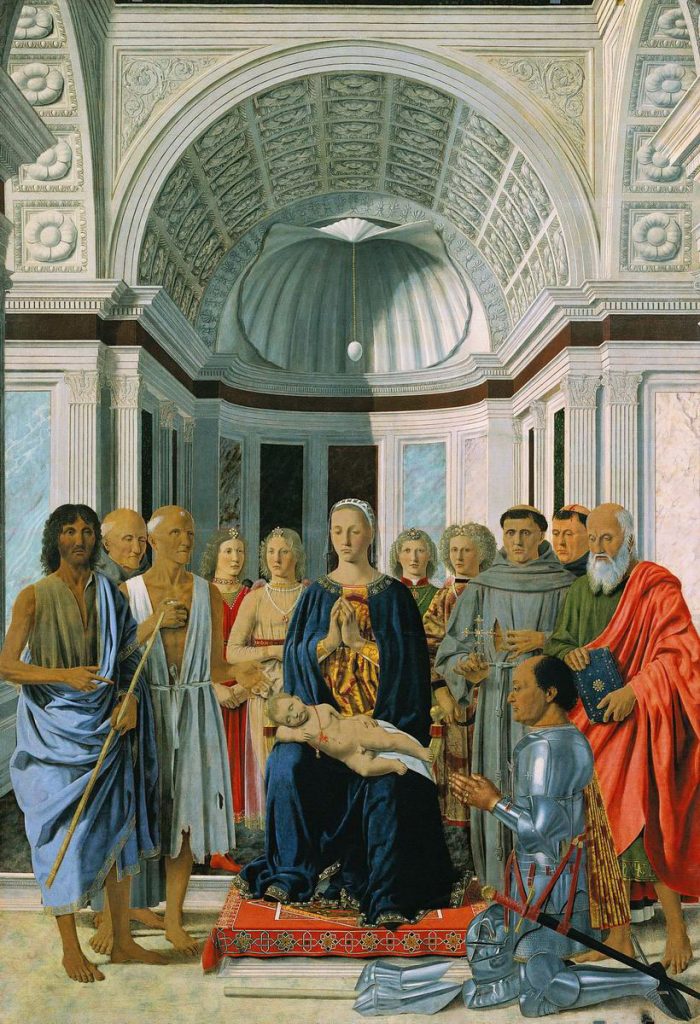The truth and the lie

Piero della Francesca, Madonna and Child with Saints, Brera
The hardest task in life is to know yourself. In his essay on Piero della Francesca’s Resurrection, which Huxley called the greatest picture in the world, he makes this astute observation, but he saves his greatest wisdom until the end. The last sentence should be tacked to the wall of every painter’s studio:
“Is Fra Angelico a better artist than Rubens? Such questions, you insist, are meaningless. It is all a matter of personal taste. And up to a point this is true. But there does exist, none the less, an absolute standard of artistic merit. And it is a standard which is in the last resort a moral one. Whether a work of art is good or bad depends entirely on the quality of the character which expresses itself in the work. Not that all virtuous men are good artists, nor all artists conventionally virtuous. Longfellow was a bad poet, while Beethoven’s dealings with his publishers were frankly dishonorable. But one can be dishonorable towards one’s publishers and yet preserve the kind of virtue that is necessary to a good artist. That virtue is the virtue of integrity, of honesty towards oneself. Bad art is of two sorts: that which is merely dull, stupid and incompetent, the negatively bad; and the positively bad, which is a lie and a sham. Very often the lie is so well told that almost every one is taken in by it–for a time. In the end, however, lies are always found out. Fashion changes, the public learns to look with a different focus and, where a little while ago it saw an admirable work which actually moved the emotions, it now sees a sham. In the history of the arts we find innumerable shams of this kind, once taken as genuine, now seen to be false. The very names of most of them are now forgotten. Still, a dim rumor that Ossian once was read, that Bulwer was thought a great novelist and ‘Festus’ Bailey a mighty poet still faintly reverberates. Their counterparts are busily earning praise and money at the present day. I often wonder if I am one of them. It is impossible to know. For one can be an artistic swindler without meaning to cheat and in the teeth of the most ardent desire to be honest.”
–Aldous Huxley, “The Best Picture”, 1925, from The Piero Della Francesca Trail, John Pope-Hennessy, 1991
Comments are currently closed.